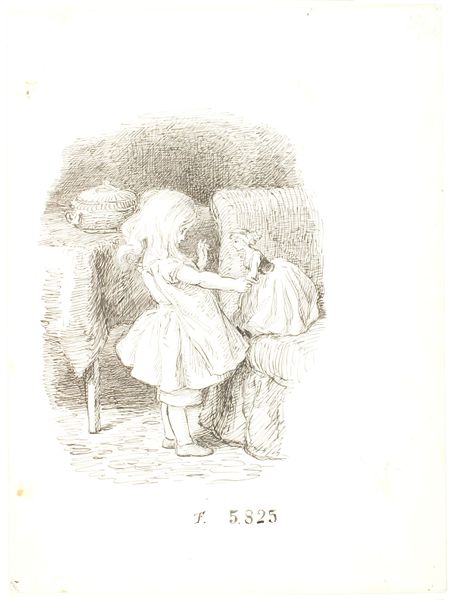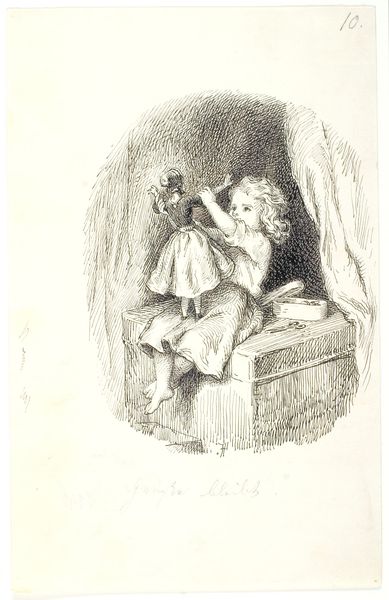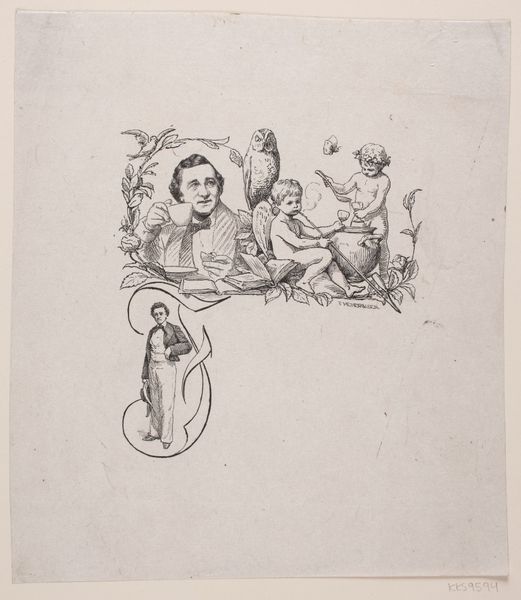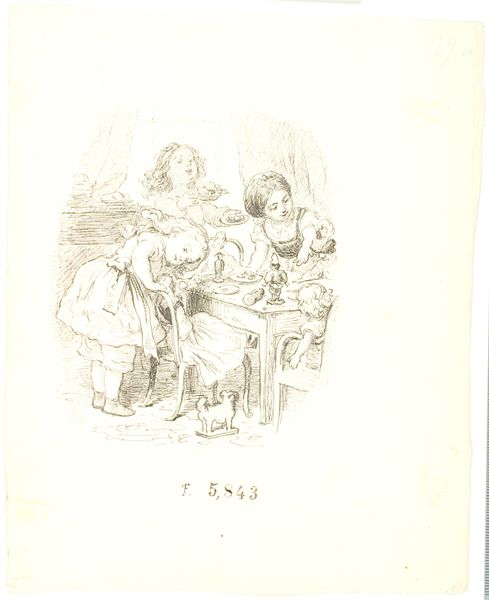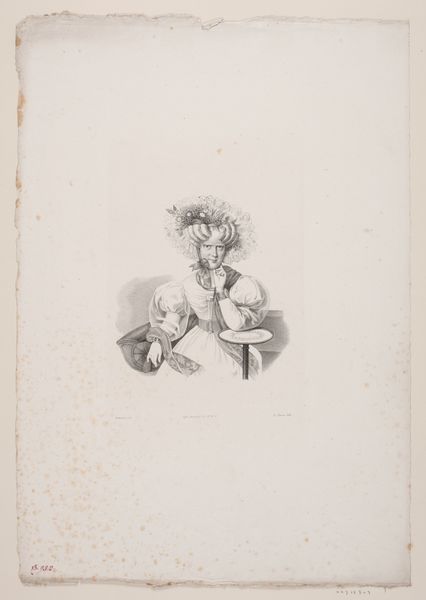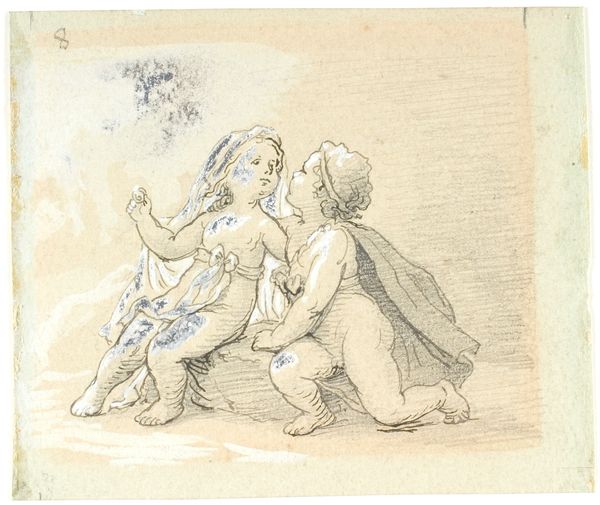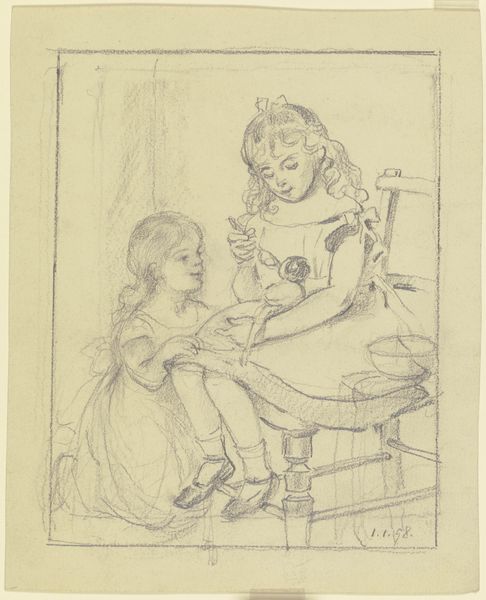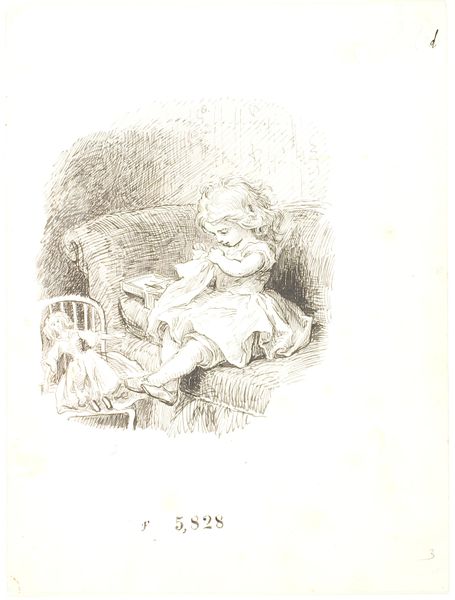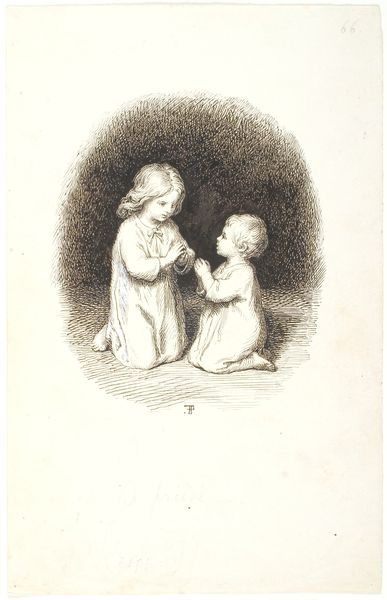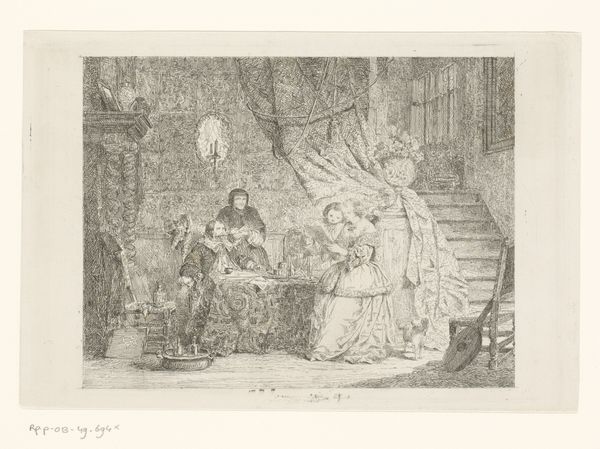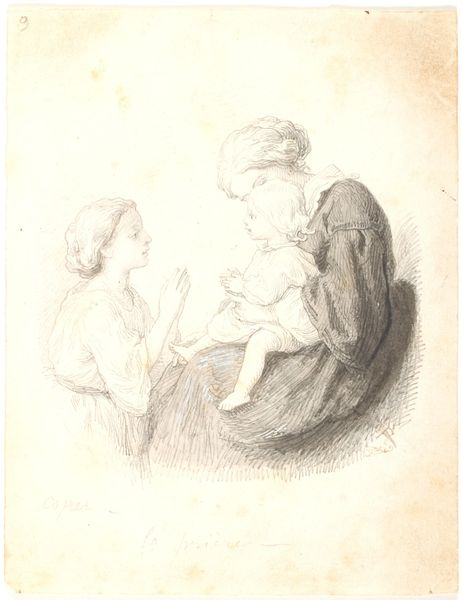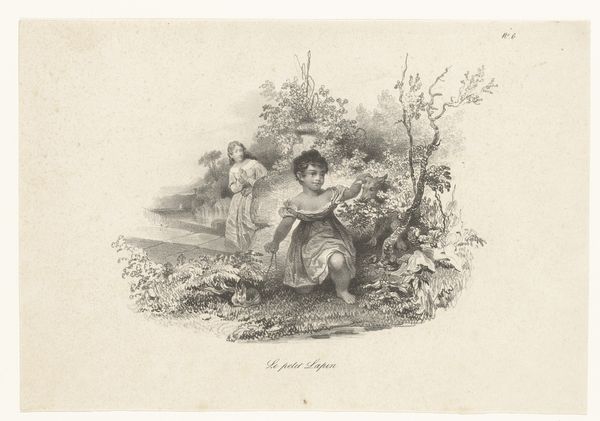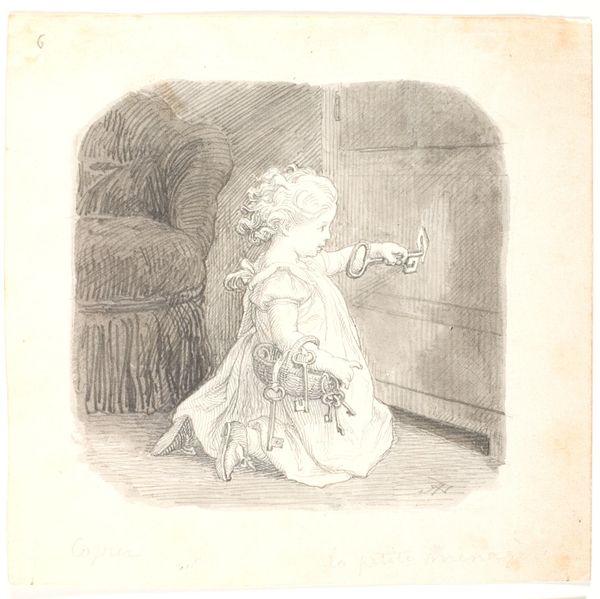
drawing, ink
#
drawing
#
figuration
#
ink
#
genre-painting
Dimensions: 204 mm (height) x 165 mm (width) (bladmaal)
Editor: Here we have Lorenz Frølich’s ink drawing, *Sangleg*, from 1886. It looks like a ring-around-the-rosy type scene. It gives off a dreamy, innocent vibe. What draws your eye when you look at this drawing? Curator: I’m struck by the doubling effect, how the ring of children echoes another circle—or rather, several circles of memory. Notice how the doll mimics the children and their gestures, yet also remains distinctly separate, an uncanny participant? What associations does the doll evoke for you? Editor: I suppose it's about imitation, how kids learn to behave and mirror others, especially within their community. Is the doll symbolic? Curator: Yes, the doll acts as a vessel holding idealized versions of themselves and societal expectations, almost like a reflection of their future roles, prompting the question, are they shaping the doll or is the doll shaping them? Think of the historical moment. In 1886, what norms might have been projected onto young girls through toys and imagery? Editor: So, the doll embodies cultural conditioning. The image as a whole, though, is so joyful; are we meant to consider its more profound suggestions, or can we take pleasure in the depiction of play? Curator: Pleasure and questioning aren’t mutually exclusive. Frølich reminds us that even in innocence, cultural scripts are being learned and performed, embedding continuity in visual symbolism. What will these children remember about such a day, and how will this memory shape who they will become? Editor: This makes me see the artwork not just as an innocent snapshot, but as an exploration of how traditions are both joyous and potentially binding. Curator: Exactly. By capturing this fleeting moment of play, Frølich offers a timeless meditation on memory, identity, and the weight of cultural inheritance.
Comments
No comments
Be the first to comment and join the conversation on the ultimate creative platform.
